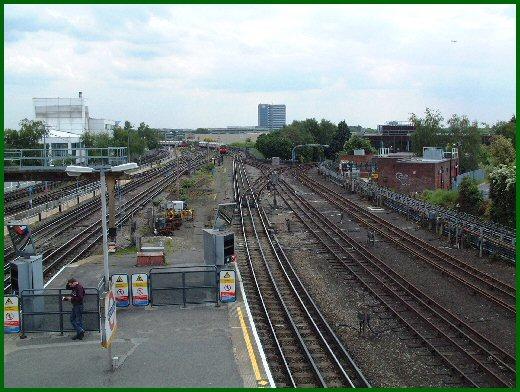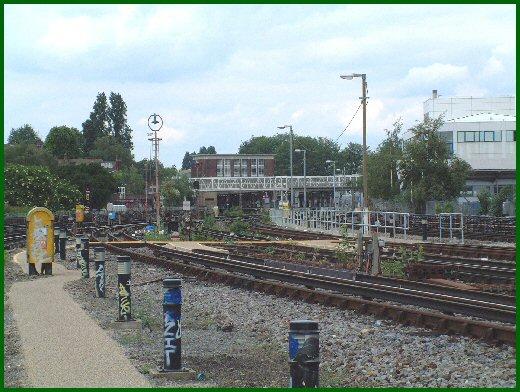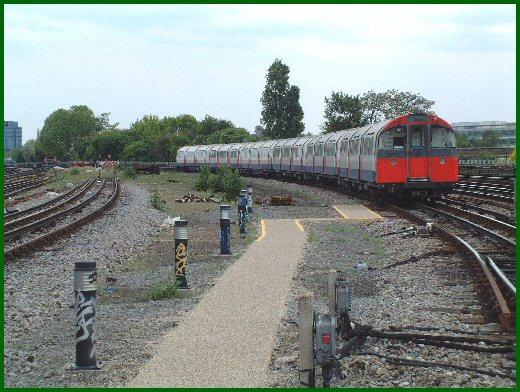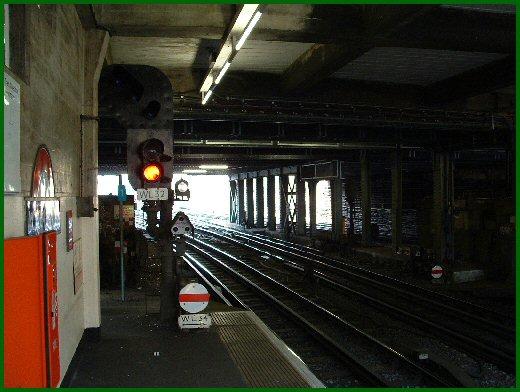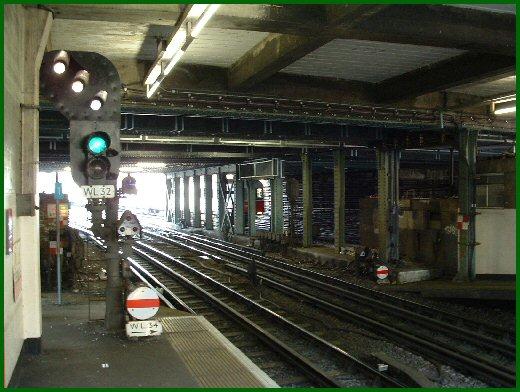 |
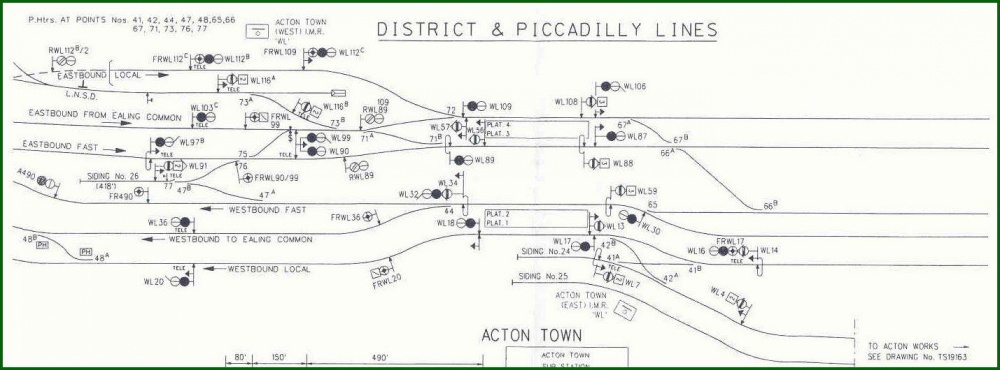 |
|
Acton Town - Depot roads (left) station (middle) and to the East (right) |
 |
|
|
||||||||||||||||
|
small picture the appearance of the rails gives a good indication as to how rarely these are now used. The entry to Acton Works (and the works itself) can also be seen. The pointwork to and from the works to the westbound ‘local’ can also be seen, again now infrequently used. |
|
|
|
|
|
|
|
|
|
Platform 5 at Acton Town Platform 5 at Acton Town is from where, between 1932 and its closure on 2nd March 1959, the shuttle service between Acton Town and South Acton operated. In Piers Connor's book ‘Going Green’ there are photographs of both South Acton station and of a train standing at Platform 5 at Acton Town on page 66. Platform 5 still exists, although hidden behind the hoarding visible from Platform 4, the eastbound ‘local’ platform. The following photos were taken looking down on the platform from the walkway over the eastbound local road and - if compared with the photo in Pier Connor’s book - little has changed. At some point I hope to gain the indulgence of the station staff at Acton Town to let me down onto the old platform for a chance to get a couple of pictures from that level. |
 |
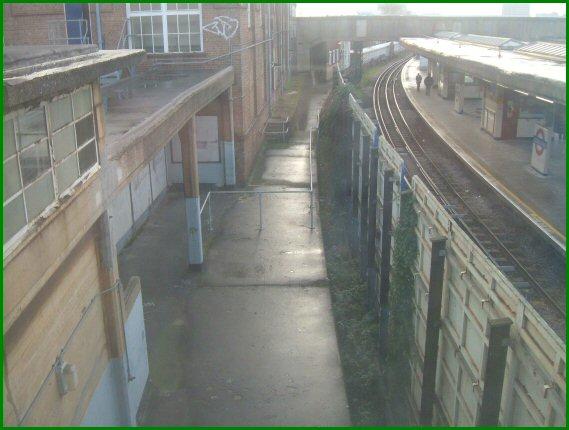 |
|||||||||
|
[ABOVE] This photo is the view looking towards the east. The structure to the left is the stairs down to the platform, which itself is still in remarkably good condition. |
||||||||||
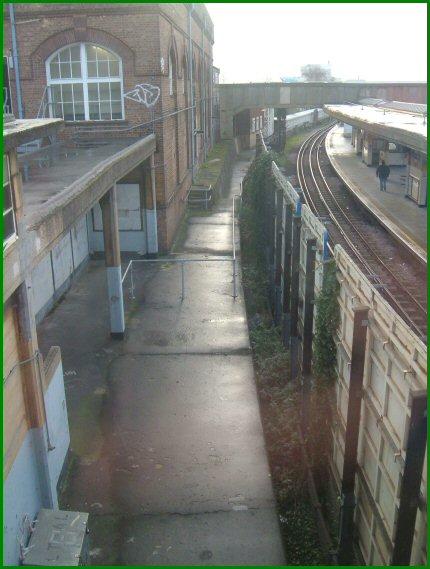 |
||||||||||
|
This photo is looking towards the west, and the ramp down to track level is still clearly visible. The grassy area in the top centre is where the sand drag used to be, as seen in Piers Connor’s book. |
||||||||||
|
[RIGHT] Although very similar to the previous picture (ABOVE RIGHT), this makes it a little easier to imagine how the now removed track was aligned. It ran towards South Acton on the land which is now occupied by Bollo House, the covered walkway to which is visible to the left of the eastbound track visible here, then curving left towards South Acton station which of course still exists today. |
||||||||||
 |
